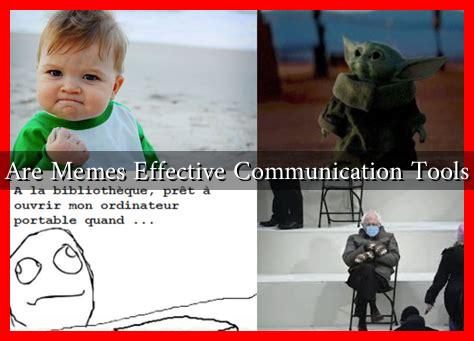-
Table of Contents
Are Memes Effective Communication Tools?
In the digital age, memes have emerged as a unique form of communication that transcends traditional barriers. They are not just humorous images or videos; they encapsulate complex ideas, emotions, and cultural references in a format that is easily shareable and relatable. This article explores the effectiveness of memes as communication tools, examining their impact on social media, marketing, and interpersonal communication.
The Anatomy of a Meme
At their core, memes are a blend of visual and textual elements that convey a message or sentiment. They often rely on cultural references, humor, and irony, making them instantly recognizable and relatable. The key components of a meme include:
- Visual Element: This could be an image, GIF, or video that captures attention.
- Textual Element: A caption or phrase that adds context or humor.
- Cultural Relevance: Memes often draw from current events, pop culture, or shared experiences.
Memes in Social Media Communication
Social media platforms like Twitter, Instagram, and TikTok have become breeding grounds for memes. Their viral nature allows for rapid dissemination of ideas and emotions. According to a study by the Pew Research Center, 55% of teens use memes to express their feelings and opinions, highlighting their role in modern communication.
Memes can serve various purposes in social media communication:
- Humor: They provide comic relief and can lighten the mood in serious discussions.
- Social Commentary: Memes can critique societal norms and provoke thought on important issues.
- Community Building: Shared memes can foster a sense of belonging among users with similar interests.
Memes in Marketing and Branding
Businesses have recognized the potential of memes as marketing tools. Brands like Wendy’s and Netflix have successfully integrated memes into their social media strategies, resulting in increased engagement and brand loyalty. A study by the Digital Marketing Institute found that 64% of marketers believe memes are an effective way to reach younger audiences.
Key benefits of using memes in marketing include:
- Cost-Effective: Creating and sharing memes is often less expensive than traditional advertising.
- Viral Potential: Memes can quickly go viral, reaching a wider audience than conventional ads.
- Relatability: Memes resonate with audiences, making brands appear more approachable and in touch with current trends.
Challenges and Limitations of Memes
Despite their effectiveness, memes also come with challenges. Misinterpretation is a significant risk; what is humorous to one group may be offensive to another. Additionally, the rapid pace of meme culture can lead to oversaturation, where the impact of a meme diminishes quickly.
Other limitations include:
- Context Dependency: Memes often rely on specific cultural knowledge, which may alienate some audiences.
- Short Lifespan: The relevance of a meme can fade quickly, making it a less reliable long-term communication tool.
- Potential for Misinformation: Memes can spread false information if not carefully crafted.
Conclusion: The Future of Memes in Communication
In conclusion, memes have proven to be effective communication tools in various contexts, from social media interactions to marketing strategies. Their ability to convey complex ideas in a relatable format makes them particularly appealing in today’s fast-paced digital landscape. However, it is essential to navigate the challenges they present, ensuring that memes are used thoughtfully and responsibly.
As we move forward, the role of memes in communication will likely continue to evolve. Understanding their nuances and potential will be crucial for individuals and brands alike. For further insights into the impact of memes on communication, you can explore resources like Pew Research Center and Digital Marketing Institute.

